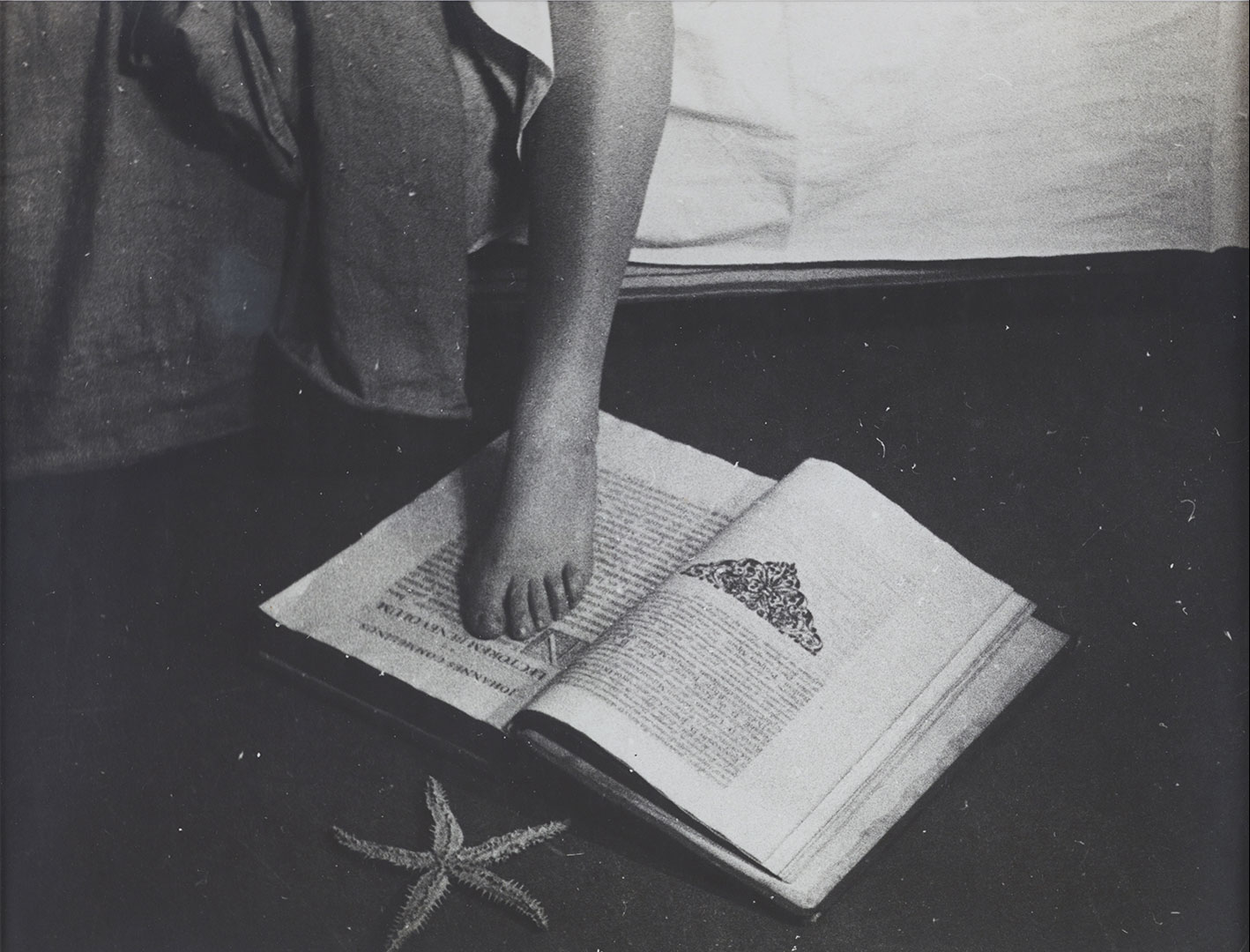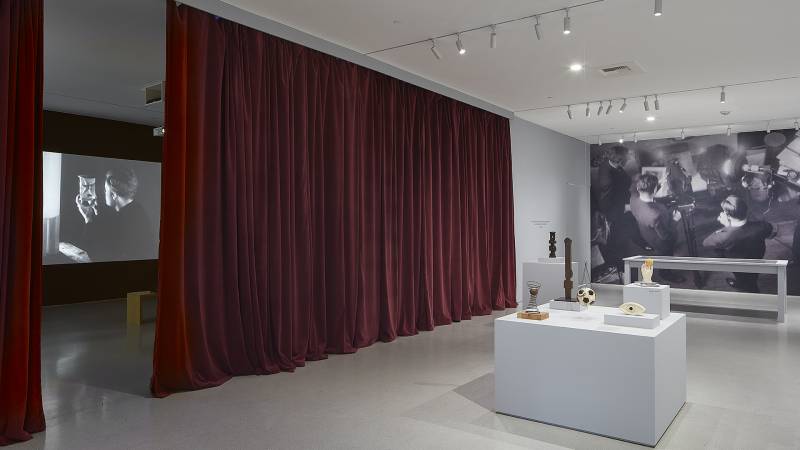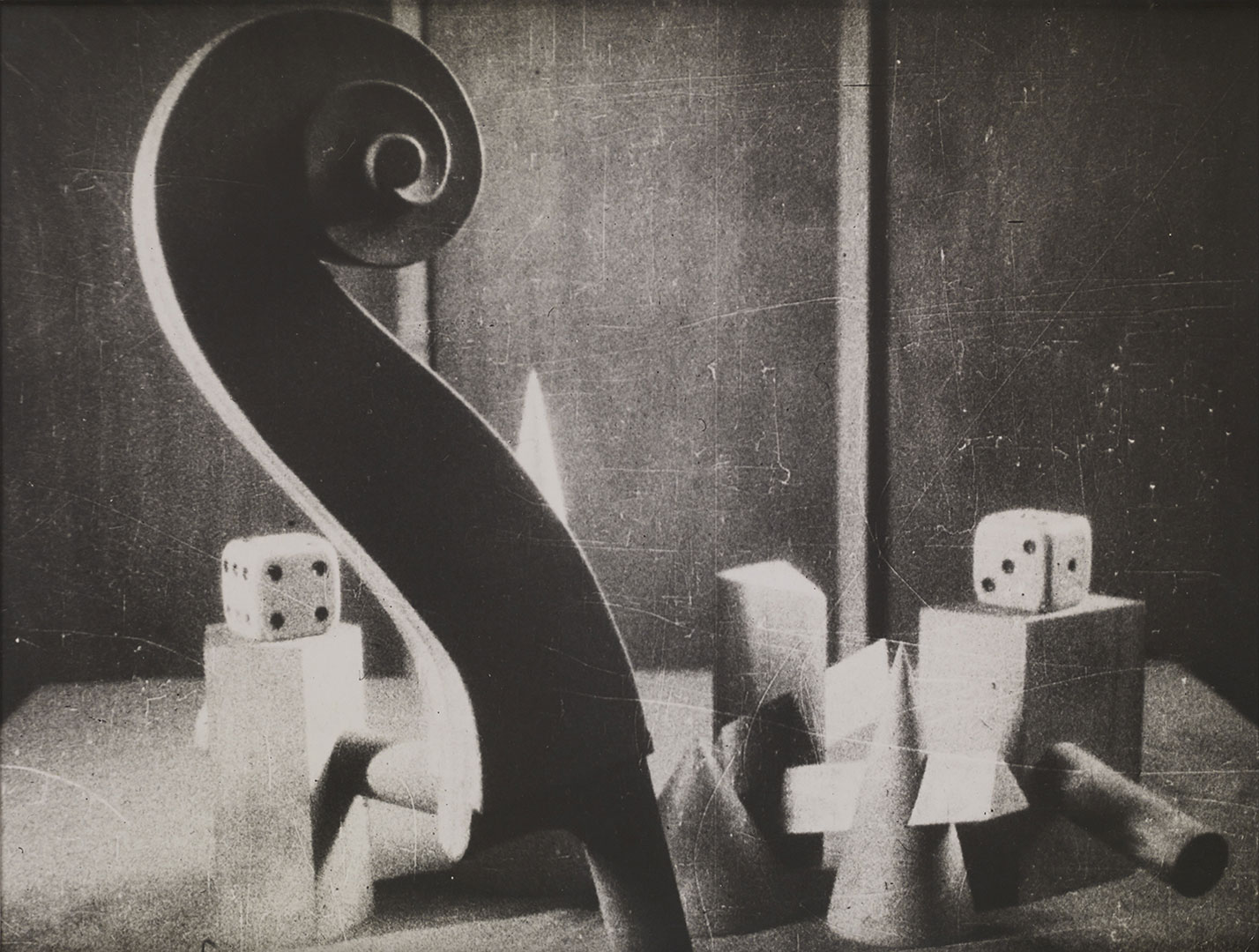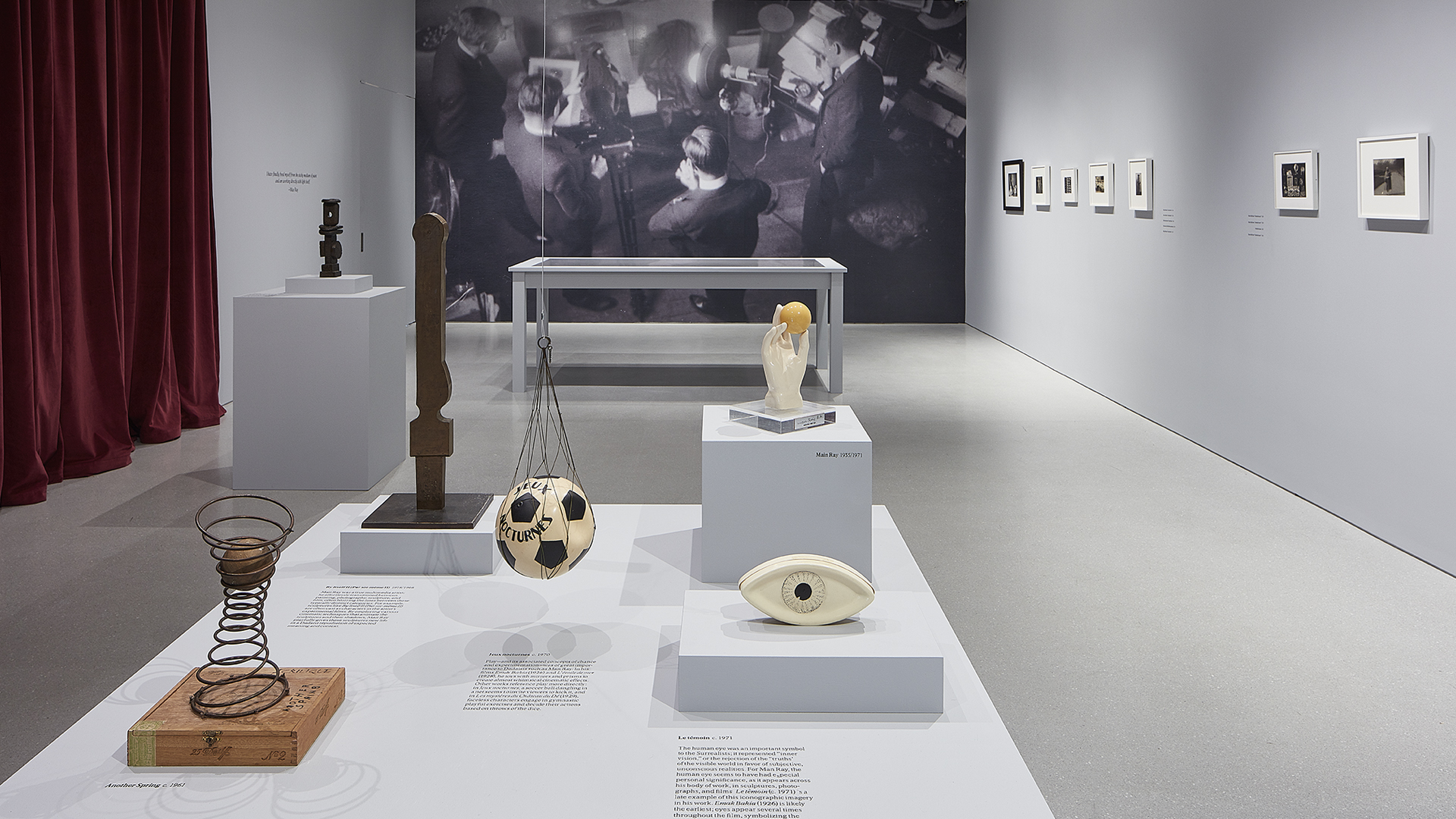At an offsite event to mark the opening of the new Gagosian exhibit Man Ray: The Mysteries of Château du Dé, the band SQÜRL played a live score to four of the surrealist’s 1920s films. It was an exclusive event, invite-only, and intended or not, it established SQÜRL’s soundtrack as the “correct” one for Man Ray’s silent, anarchic works.
SQÜRL (pronounced like the sharp-toothed, bushy-tailed, suburban rodent) consists of just two musicians: Jim Jarmusch, the film director, and producer/composer Carter Logan. To distinguish one from the other visually, you need simply compare the way each man styles his hair. Jarmusch’s untamed, silvery crew cut stood straight up towards the angels painted on the ceiling of the former church hosting the event, each strand electrified by blue spotlights. Whereas Logan’s beard—a small continental shelf—veered downward to the Earth’s turbulent core.
In his brief introduction, Jarmusch murmured into the microphone that he had watched and loved Man Ray’s films as a teenager. Without too much analysis, most of his fans can appreciate the influence of 20th century Dada on Jarmusch’s unique sensibility. You can hear it in the flattened delivery of actors reciting his dialogue. You can see it in the genre-defying non-sequiturs of his most recent film, The Dead Don’t Die.

Three of the four Man Ray films that SQÜRL’s music accompanied are now playing in the Gagosian gallery: Emak Bakia (1926), L’étoile de mer (1928) and Les Mystères du Château du Dé (1929). Timothy Baum, the curator who worked closely with the Man Ray estate, notes that Emak Bakia was funded by an expat American stockbroker by the name of Wheeler. He invited Man Ray to his villa near Biarritz to make the film. L’étoile de mer is a “cinépoeme” based on the imagery and ideas in a poem by the French writer Robert Desnos, a fellow surrealist. And Les Mystères du Château du Dé foregrounds a villa owned by Vicomte Charles de Noailles, designed by the architect Robert Mallet-Stevens. Man Ray includes plenty of quick cut edits and strange visual allusions but it’s ultimately a snapshot of an aristocratic afternoon at someone’s perfectly lovely, remote and private castle.
As you view these images in the gallery, there are three sets of wireless headphones resting on benches, offering up soundtracks to viewers of the three projection screens. The curators have selected jazz-inflected music from the same era that the films were made, but it sounds frivolous and bubbly after experiencing SQÜRL’s blend of mysticism and doom.





